What the economy may look like in 2024

Will 2024 be a good one for us? The verdict so far is that the year will see slow GDP growth but also experience lower inflation. Recent interest rate increases pushed many borrower countries, particularly in the South, on the brink of defaulting on their sovereign debts. Food prices and energy costs will be volatile, given the current state of geopolitical tensions. Three significant unknowns at this point are the trajectory of the two ongoing wars in Ukraine and the Middle East, the resurgence of Covid-19, and the simmering US-China tension.
Adding to that is the uncertainty in the economic policy regime that could come in the wake of the elections in Russia, India and the US. Policy changes, government regulation, interest rates, and other areas could make 2024 a "tumultuous year," Bloomberg suggests.
A widely-tracked survey conducted last July by the World Economic Forum showed that continuing volatility in geopolitical and geoeconomic relations between major economies is the biggest concern for the risk officers in both the public and private sectors. Most respondents participating in the Chief Risk Officers Outlook 2023 survey were edgy and are expecting upheavals at a global scale. The report was released three months before tensions escalated in the Middle East.
The best news, and this bodes well for 2024, is that 2023 turned out to be better, in terms of economic outcomes, than one could have expected, given that two bloody wars are still in progress and could still affect the market for food grains, oil, and other commodities. While nobody expects the ripple effects of the wars on shipping routes and the supply chain to be as catastrophic as the one we saw in 2020-2022 in the aftermath of Covid, there is still a pretty good chance that the war in Ukraine and Israel's invasion of Gaza could jeopardise world economic recovery. And there is always the low-level tension in the Asia-Pacific region with the US trying to contain China's influence.
According to a recent IMF forecast, global growth is anticipated to slow from 3.5 percent in 2022 to 3.0 percent in 2023 and 2.9 percent in 2024, well below the historical (2000–19) average of 3.8 percent. Advanced economies are expected to slow from 2.6 percent in 2022 to 1.5 percent in 2023 and 1.4 percent in 2024 as policy tightening takes effect. Emerging markets and developing economies are projected to have a modest decline in growth from 4.1 percent in 2022 to 4.0 percent in both 2023 and 2024.
As I mentioned earlier, the year's biggest concern is the increased uncertainty and volatility in the markets, including the foreign exchange. The world economy is not in a steady state, and there are many forces that might be considered "external shocks," which have the potential to leave us reeling for more breath. Extreme weather conditions, the rising level of tensions in Bab-el-Mandeb, and the escalation of Israel's attacks on Lebanon and Syria could each accentuate volatility in energy and food prices and aggravate supply chain problems. Besides, skirmishes between the Houthi forces of Yemen and the US military providing support for Israel in the Red Sea have caused hikes in insurance and freight rates.
One of the major influencing factors for 2024 is the outcomes of elections in many countries. The New York Times reports that more than two billion people in roughly 50 countries, including Bangladesh, India, Indonesia, Mexico, South Africa, Russia, the United States and the 27 nations of the European Parliament, will have national elections in 2024. "Altogether, participants in 2024's elections olympiad account for 60 percent of the world's economic output," the newspaper estimates. Needless to say, the outcome of these will have a major impact on the global economy.
The New York Times singles out the following democratic countries: India, Russia, and the US. But it also left out a few other elections in Asia and Africa. Just before the New Year, Congo re-elected President Felix Tshisekedi, but as can be expected, accusations of fraud, vote-rigging, and other forms of irregularities marred the post-election celebrations in Kinshasa. One wonders how many more elections will be tarred by such unlawful electoral practices. A busy electoral calendar will create policy uncertainty.
Turning to the US elections and the soft financial landing that we saw last year, recession fears have almost gone away, although there is a lingering fear that the landing might be bumpy. The biggest uncertainty in the coming months is the Fed's interest rate policy and the prospects of Biden's reelection. If Trump is reelected in November, there could be a tectonic shift in US policy, and this would inject an additional element of uncertainty.
What we do know is that interest rates may come down this year because inflation is slowing, and the central banks will no longer be under pressure. The US Federal Reserve has indicated that it is near the end of its rate hiking cycle and might start decreasing it in the coming meetings. The European Bank and others are likely to follow suit.
Since the US rates are critical drivers of other variables, there is speculation as to how many cuts will be forthcoming this year.
In Bangladesh, 2023 was the year of inflation. However, there is widespread conviction that these official figures hide the true picture, and it is expected that the new government will take measures to keep the price of food and other essentials in check. If all goes well, interest rates will level off in the second half of this year, and the taka to dollar exchange rate will stabilise after the Hajj season. However, pressure on the exchange rate will continue, with the country's foreign exchange reserve tottering around $20 billion.
The government will need to reprioritise its economic agenda and focus next year on two areas: the bread-and-butter issues for the masses and the stagnating industrial sector. Bangladesh is now the third largest food importer, so grain prices need to be held in check, be it through regulating the syndicates, a better distribution mechanism, or strengthening market management. Pierre-Olivier Gourinchas, the IMF chief economist, estimates that grain prices could go up by 15 percent. The FAO Food Price Index is forecasting continued volatility in the rice market, with world rice flows in 2024 likely to fall 1.5 percent below their already reduced 2023 level.
Investment in manufacturing in Bangladesh is low, and future growth and employment must come from this sector even though 2023 saw dismal performance. Manufacturing makes up only 22 percent of the national economy, compared with 26 percent in South Korea, 27 percent in Thailand and 28 percent in China, according to World Bank data. Cambodia has 24 percent and only Sri Lanka has a lower share (20 percent). Diversification of the industries must be put back on the government's list of priorities.
Dr Abdullah Shibli is an economist and works for Change Healthcare, Inc, an information technology company. He also serves as senior research fellow at the US-based International Sustainable Development Institute (ISDI).
Views expressed in the article are the author's own.
Follow The Daily Star Opinion on Facebook for the latest opinions, commentaries and analyses by experts and professionals. To contribute your article or letter to The Daily Star Opinion, see our guidelines for submission.

 For all latest news, follow The Daily Star's Google News channel.
For all latest news, follow The Daily Star's Google News channel. 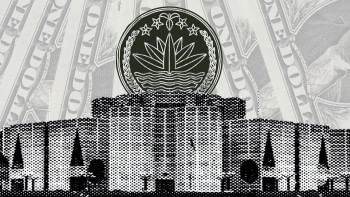


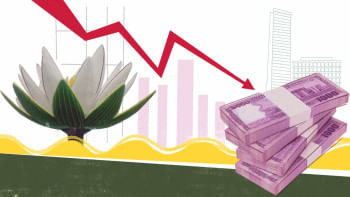
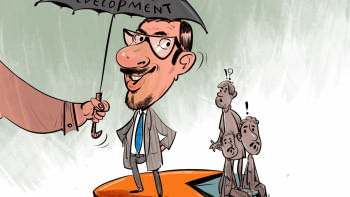



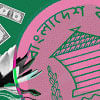

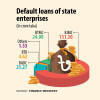



Comments